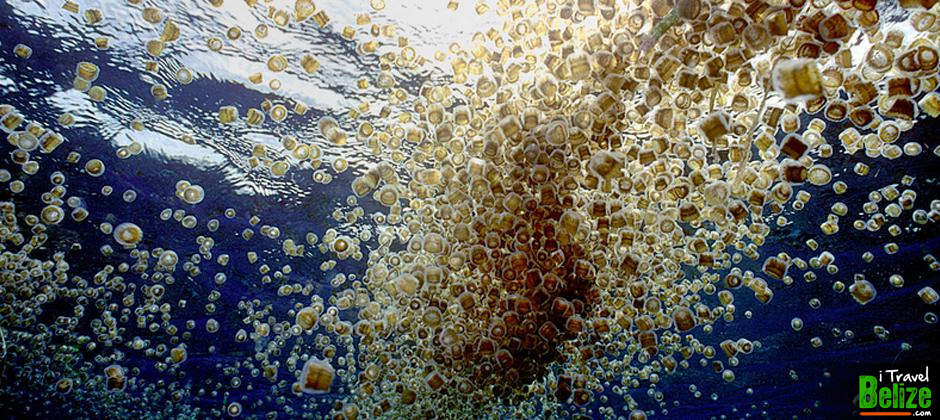Many explain it as having hundreds of mosquitoes biting you all over at the same time. Most of the time you will not be aware that you have been stung by the hundreds of Thimble Jellyfish that you have come in contact with. Spring/Easter season brings the ‘Pica Pica’ jellyfish to the shores of Belize.
The Thimble Jellyfish make their appearance to the shores of Belize during the windy days between March and May, but its not uncommon to find these jellyfish from late January all the way to June. They suddenly arrive when the high winds and strong currents start making their way into the area.

The Thimble Jellyfish is locally known as the Dedal and the discharge of their larvae is called the Pica Pica, although locals call the jellyfish Pica Pica. It is this discharge that contains the stinging cells that will cause a skin irritation. Many will find that playing with the actual jellyfish will not cause any skin irritation unless they are releasing their larvae.
This marine animal is a small jellyfish resembling a thimble that measures about 1″ in diameter and is conspicuously mottled with dark brown markings. They appear in dense aggregations which are transported by winds and current.
So if you are planning of having some fun in the sea during this time of year in Belize, BE WARNED and make sure you keep away from them.
Click link to view video https://youtu.be/nj4Ca8s4aY4
Why Is There A Need For A Warning On The Thimble Jellyfish?
Accidental contact with this jellyfish causes a skin rash known as sea bathers eruption. This dermatitis is characterized by the acute appearance of small itchy erythmas that may, in some cases, evolve into pustules. This eruption occurs predominantly on body areas that are covered by the bathing suit or subjected to pressure or rubbing, such as armpits, neck, groin and inner thighs. In some cases the dermatitis includes chills, fever nausea, headache and weakness, particularly in children. Symptoms don not appear until hours (1 to 24) after leaving the water. Because of this, sea bathers eruption is sometimes confused with viral gastroenteritis or varicella (chicken pox). The lesions usually persist from a few days to weeks, after which they spontaneously heal.
Some Preventative Measures.
Persons with histories of allergies should avoid swimming in waters infested with Thimble Jellyfish. Swimmers who must risk exposure should avoid the use of T-Shirts as they trap the thimble Jellyfish between skin and clothing thus increasing the severity of the reaction. After exposure to seawater, swimmers SHOULD NOT SHOWER WITH FRESH WATER. Fresh water triggers the stinging cells. It is advisable to change out of bathing suit as soon as possible and apply vinegar which neutralizes the nematocysts that cling to the skin but have not yet released their toxins. Bathing suits should be thoroughly washed with detergent as symptoms may recur if contaminated suits that were poorly washed are re-worn.

Is there Treatment?
When the lesions are minimal the application of creams and lotions to reduce the rash is recommended. The use of antihistamines is often helpful but should not be done without consulting a physician. In severe cases, topical and systemic steroids may be used but always under medical supervision. IMORTANT, DO NOT SCRATCH the affected areas because this can lead to skin infections.

